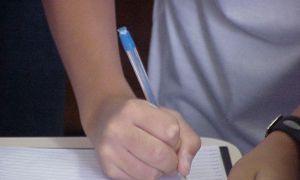Every young student in America should know the four art disciplines; dance, music, theater, and visual arts. These four art disciplines are as important as math, science, english, history, civics, government, geography, and foreign language. In the following essay I will discuss each of the four art disciplines and describe how they should be taught. I will also provide recommedations on how each should be taught based on current research studies and theoretical constructs related to art education.
As students grow in knowledge in math, science, english, and social studies, they need to grow in art educaiton. It is important for students to explore and develop their interests in music, theater, and visual arts. It is believed that art education helps build academic and career success. Art teachers thinking skills as well as memory skills. It allows students to express their feelings, beliefs, and experiences.
Dance is a form of art that can be taught to students. Dance helps promote physical fitness and helps to develop motor skills and coordinaiton. It can be taught during movement activities or physical education. By teaching dance students can develop agility and grace which help to develop motor skills and coordination.
Music is also a form of art that can be taught to students. Music teaches discipline and mathematics skills. Music can be used to teach students how to play an instrument. By teaching students to play an instrument they are learning how to master a skill. They are learning to complete skills by completing one step at a time.
Theater is also a form of art that students can be taught. Theater teaches students to express their thoughts, feelings, and opinions. By teaching students theater they act out emotions. By doing this students learn to control their emotions and respect others.
Visual art is a form of art that should be taught to students as well. Visual art provides creativity in students. Students are given the chance to do what ever they want. Students are given the opportunity to create anything they want, therefore, they become confident in themselves.
When students learn about art they learn to achieve and succeed in academics as well as life and social skills. Art can increase reading skills, language development, and writing skills. “Reading rediness, writing, reading comprehension,a dn communicaiton proficiency are elements of literacy that are fostered through arts infusion”(www.newhorizions.com). Mathematics skills improve with music. Music instruction helps students develop the ability to understand and use mathematical ideas and concepts. “Spatial reasoning and spatial-temporal reasoning skills are integral to the acquisiton of mathematics skills-and inherent in the study of music” (www.newhorizions.com). Music is an important tool that teachers can use to help improve students’ mathematical skills. Thinking skills can also benefit from art educaiton. Art education strengthens student’s cognitive abilities such as spatial reasoning, conditional reasoning, problem solving, and creative thinking. It can also improve social skills. “Certain art activities promote positive growth in social activity” (www.newhorizions.com). Students learn to become risk takers so they become motivated to learn and achieve in school and in life. Art also promotes a positive school environment. It helps students to feel as though they are having fun while they are learning. Art allows students to slow down and take their time to do work or learn a new task. They don’t feel as though they have to rush through everything.
Visual art is important in education because today’s world is highly visual. With televisions, videos, advertisements, and other media students need to understand the concepts of visual arts. “The human brain has a visual cortex that is five times larger than the auditory cortex” (www.newhorizions.com). The human brain makes it possible for humans to respond to visual art and learn from it because of the visual cortex in the brain.
Music is also important for students to experience. Our society is engulfed in music therefore we are by nature musical and rhythmical people. Music helps to build mathematical skills mainly because of the rhythmical and tonal patterns presented in music. Everyone is born with his or her own rhythms of breathing and pulse patterns so music is a part of every human being. As students listen to music they “exercise their cortical neurons” (www.newhorizions.com) which are used to understand mathematics. Music enhances spatial reasoning. “Spatial intelligence is teh ability to preceive the visual world accurately, to form mental images of physical objects, and to recognize variations of objects” (www.newhorizions.com). Because spatial intelligence helps with mental images we can recognize variations of objects because mathematical and reading skills are improved. These spatial features are critical for higher brain function and help us to develop collaborative skills. When teaching a student music they are learning how to get along with others and listen to others.
Dance is also an art form that can be important to student learning. Students who are kinesthetic learners do better in the classroom when they are given the opportunity to move or learn through movement. Students who are taught to use movement to learn their alphabet or math facts are better able to remember them.
Theater is also an art that should be taught to students. Theater allows students to become socially active and skillful. Students can express their thoughts, feelings, and ideas through theatrical learning. We also develop collaborative skills through theater art, as well as problem solving, conceptual and analytical thinking skills. Through theater students can act out stories, poems, and nursery rhymes in their heads. Thye develop an understanding of what a story or poem is about.
Research from www.newhorizions.com proves that art education is important to help students learn in all areas of the curriculum. Art education provides students with the tools and skills they need to succeed in the classroom and in life, work,and social skills. Art education helps students to develop into well rounded, intellectual individuals.
References:
Art Education Research. retrieved from www.newhorizions.com




